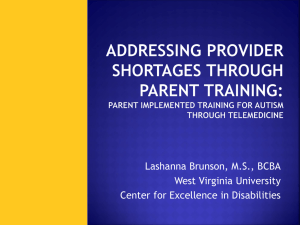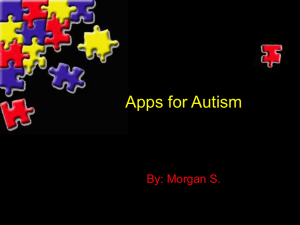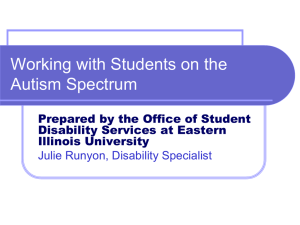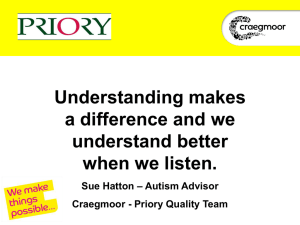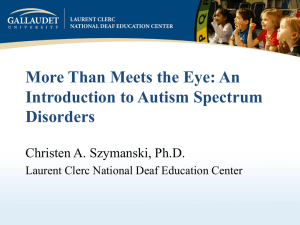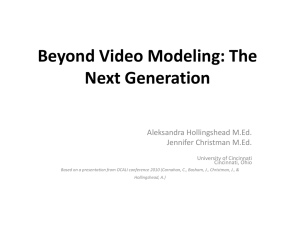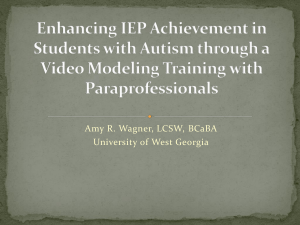The Autism Spectrum Disorders - Albert Einstein College of Medicine
advertisement
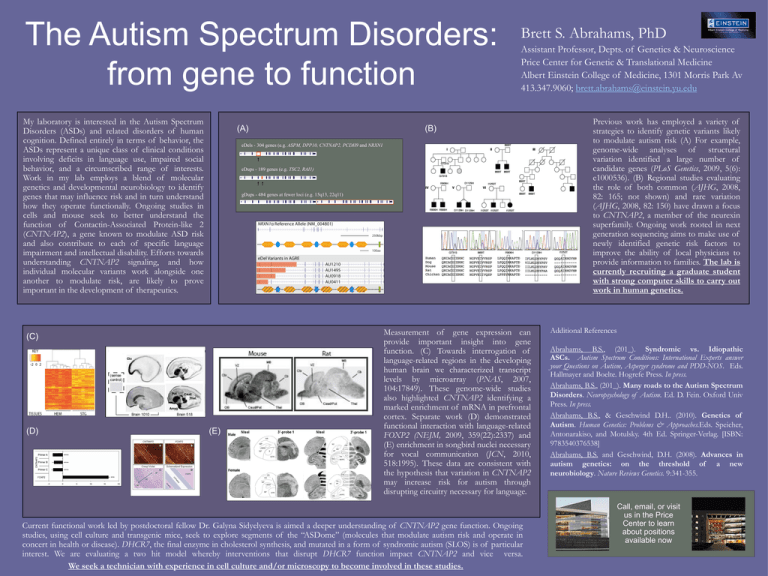
The Autism Spectrum Disorders: from gene to function My laboratory is interested in the Autism Spectrum Disorders (ASDs) and related disorders of human cognition. Defined entirely in terms of behavior, the ASDs represent a unique class of clinical conditions involving deficits in language use, impaired social behavior, and a circumscribed range of interests. Work in my lab employs a blend of molecular genetics and developmental neurobiology to identify genes that may influence risk and in turn understand how they operate functionally. Ongoing studies in cells and mouse seek to better understand the function of Contactin-Associated Protein-like 2 (CNTNAP2), a gene known to modulate ASD risk and also contribute to each of specific language impairment and intellectual disability. Efforts towards understanding CNTNAP2 signaling, and how individual molecular variants work alongside one another to modulate risk, are likely to prove important in the development of therapeutics. (A) Assistant Professor, Depts. of Genetics & Neuroscience Price Center for Genetic & Translational Medicine Albert Einstein College of Medicine, 1301 Morris Park Av 413.347.9060; brett.abrahams@einstein.yu.edu (B) eDels - 304 genes (e.g. ASPM, DPP10, CNTNAP2, PCDH9 and NRXN1 eDups - 189 genes (e.g. TSC2, RAI1) gDups - 484 genes at fewer loci (e.g. 15q13, 22q11) (C) (D) Brett S. Abrahams, PhD (E) Measurement of gene expression can provide important insight into gene function. (C) Towards interrogation of language-related regions in the developing human brain we characterized transcript levels by microarray (PNAS, 2007, 104:17849). These genome-wide studies also highlighted CNTNAP2 identifying a marked enrichment of mRNA in prefrontal cortex. Separate work (D) demonstrated functional interaction with language-related FOXP2 (NEJM, 2009, 359(22):2337) and (E) enrichment in songbird nuclei necessary for vocal communication (JCN, 2010, 518:1995). These data are consistent with the hypothesis that variation in CNTNAP2 may increase risk for autism through disrupting circuitry necessary for language. Current functional work led by postdoctoral fellow Dr. Galyna Sidyelyeva is aimed a deeper understanding of CNTNAP2 gene function. Ongoing studies, using cell culture and transgenic mice, seek to explore segments of the “ASDome” (molecules that modulate autism risk and operate in concert in health or disease). DHCR7, the final enzyme in cholesterol synthesis, and mutated in a form of syndromic autism (SLOS) is of particular interest. We are evaluating a two hit model whereby interventions that disrupt DHCR7 function impact CNTNAP2 and vice versa. We seek a technician with experience in cell culture and/or microscopy to become involved in these studies. Previous work has employed a variety of strategies to identify genetic variants likely to modulate autism risk (A) For example, genome-wide analyses of structural variation identified a large number of candidate genes (PLoS Genetics, 2009, 5(6): e1000536). (B) Regional studies evaluating the role of both common (AJHG, 2008, 82: 165; not shown) and rare variation (AJHG, 2008, 82: 150) have drawn a focus to CNTNAP2, a member of the neurexin superfamily. Ongoing work rooted in next generation sequencing aims to make use of newly identified genetic risk factors to improve the ability of local physicians to provide information to families. The lab is currently recruiting a graduate student with strong computer skills to carry out work in human genetics. Additional References Abrahams, B.S., (201_). Syndromic vs. Idiopathic ASCs. Autism Spectrum Conditions: International Experts answer your Questions on Autism, Asperger syndrome and PDD-NOS. Eds. Hallmayer and Boelte. Hogrefe Press. In press. Abrahams, B.S., (201_). Many roads to the Autism Spectrum Disorders. Neuropsychology of Autism. Ed. D. Fein. Oxford Univ Press. In press. Abrahams, B.S., & Geschwind D.H.. (2010). Genetics of Autism. Human Genetics: Problems & Approaches.Eds. Speicher, Antonarakiso, and Motulsky. 4th Ed. Springer-Verlag. [ISBN: 9783540376538] Abrahams, B.S. and Geschwind, D.H. (2008). Advances in autism genetics: on the threshold of a new neurobiology. Nature Reviews Genetics. 9:341-355. Call, email, or visit us in the Price Center to learn about positions available now

